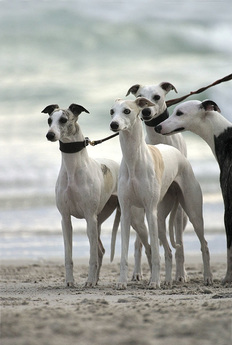HOW POPULATION SIZE AFFECTS INBREEDING
|
While inbreeding has the beneficial effects of reducing variation in litters and increasing apparent prepotency of sires and dams, it also has the very undesirable effect of increasing the expression of genetic disorders caused by autosomal recessive genes. So managing inbreeding in populations of animals is necessary for the control of genetic disease.
It's not enough just to carefully choose the sire and dam of the next breeding. For sustainable breeding over the longer term, inbreeding must be managed in the entire population, and often breeders don't have a good understanding of the factors that affect rates of inbreeding. One of the most important is the size of the population of animals. Large populations change more slowly and are more predictable over time; small populations are genetically unstable because they are more sensitive to effects of chance and because change can occur very quickly. These effects are easier to show than describe, so here is a video that will show you how you can explore the relationship between population size and inbreeding yourself using a simple population simulation. You can download the software, Populus, which will run on both PC and Mac (using Java, which is also a free download). I run through some examples for you on the video and show you how it works, but I highly encourage you to play around with it yourself. You know the size of your breed, how many founders there were, the magnitude of historic bottlenecks, and so on, and you can plug in various scenarios and see the predicted consequences on rates of inbreeding. |
Click to set custom HTML


